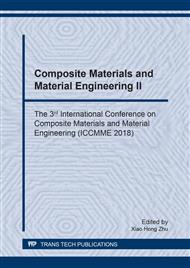p.229
p.235
p.243
p.249
p.257
p.263
p.269
p.273
p.277
Recycling of Waste Limestone as Fine Aggregate for Conventional and Green Concretes
Abstract:
This paper presents the results of the experimental works to investigate the use of waste limestone from water treatment industry as fine aggregate in green concrete. Two concrete mixtures with a constant water-to-binder ratio of 0.3 were prepared for this investigation, in which, the normal concrete mixture was designed following the guidelines of ACI 211 standard, while the green concrete mixture was designed using densified mixture design algorithm (DMDA) technology. For comparison, both types of concrete samples were subjected to the same test program, including fresh properties, compressive strength, strength efficiency of cement, drying shrinkage, electrical surface resistivity, ultrasonic pulse velocity, and thermal conductivity. Test results indicate that both concrete mixtures showed the excellent workability due to the round-shape of waste limestone aggregate and the use of superplasticizer. In addition, the green concrete mixture exhibited a better performance in terms of engineering properties and durability in comparison with the normal concrete mixture. The results of the present study further support the recycling and reuse of waste limestone as fine aggregate in the production of green concrete.
Info:
Periodical:
Pages:
257-262
Citation:
Online since:
August 2018
Authors:
Price:
Сopyright:
© 2018 Trans Tech Publications Ltd. All Rights Reserved
Share:
Citation:


